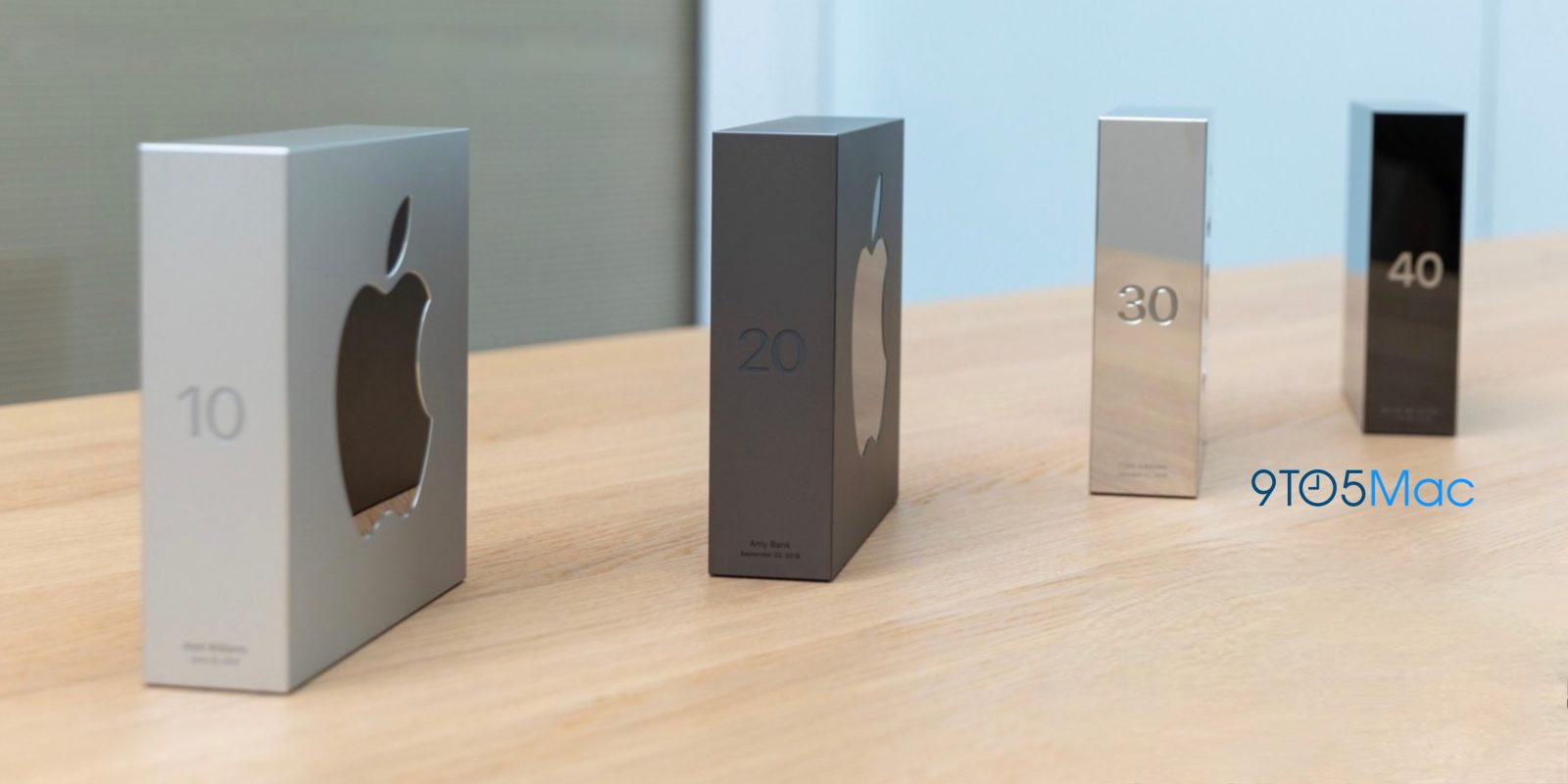Millions of inexpensive Android-powered devices used for home entertainment, vehicle infotainment, and projection have become unwitting hosts for a sprawling malware operation. The FBI has warned that these devices are being leveraged as platforms to distribute malware, conceal illicit communications, and carry out a range of unauthorized activities across consumer networks. The evolving family of threats is linked to BadBox, a criminal operation rooted in the Triada lineage, which has persisted for years by adapting to new attack surfaces and supply-chain vulnerabilities. The warning underscores the real-world danger posed by low-cost devices that often ship with minimal security updates or robust protection, creating fertile ground for sophisticated malware to hide in plain sight. Taken together, the developments over the past decade reveal a pattern of increasingly brazen techniques that blend device compromise, network abuse, and preinstalled backdoors to extend reach far beyond the initial infection.
Section 1: The Reach and Mechanism of BadBox in Low-Cost Devices
BadBox operates by seeding home ecosystems with compromised devices that can then perform a spectrum of malicious activities while remaining under the radar of typical consumer protection measures. The FBI’s advisory makes clear that millions of devices—primarily inexpensive Android-based media boxes, streaming dongles, and other off-brand hardware—have become tools in a broader crime infrastructure. Once infected, these devices no longer function merely as isolated endpoints; they become nodes that facilitate the distribution of additional malware to other devices, enable covert communications, and support a variety of illicit actions conducted within the home network. This shift from a single-device threat to a network-centric model significantly expands the potential damage and complicates containment for households and security teams alike.
The BadBox family is built on a lineage that traces back to Triada, a mobile Trojan first uncovered in 2016. Triada earned a reputation within the security community for its sophistication and breadth of capabilities. Analysts described it as among the most advanced mobile Trojans they had ever seen, thanks to an arsenal of tools designed to compromise devices at a deep level. Key features included rooting exploits that could bypass built-in Android protections and operations capable of modifying the Android OS’s Zygote process, which is responsible for spawning app processes. The implications of these capabilities were profound: compromised devices could be turned into flexible platforms for malicious tasks without relying on overt app-level intrusion, making detection and remediation far more challenging.
Over time, responses from Google and other stakeholders forced changes in how Android devices handled these exploit methods. Android updates introduced mitigations that blocked the specific techniques used by Triada to gain persistent control, reducing the immediate feasibility of similar infections on patched devices. Yet the threat endured, evolving in response to defensive measures. A year after Triada’s initial appearance, the threat reemerged in a new form: devices that arrived already compromised, pre-infected before they reached consumers. In 2019, Google confirmed that a supply-chain attack had affected thousands of devices, prompting additional protective steps to thwart its spread. This development underscored a critical reality in modern cybersecurity: even with rigorous app-level protections and device defenses, supply-chain vulnerabilities can deliver hard-to-detect compromises directly into the hands of users.
The contamination pattern broadened further in subsequent years. In 2023, security researchers from Human Security highlighted a Triada-derived backdoor called BigBox that had been preinstalled on thousands of devices manufactured in China. The researchers estimated that approximately 74,000 devices worldwide carried this backdoor, which was capable of supporting a spectrum of illicit activities. Among these were advertising fraud schemes, the establishment of residential proxy services, the creation of fake Gmail and WhatsApp accounts, and the infection of other Internet-connected devices in the household. The breadth of these functions illustrates how a single preinstalled backdoor can ripple through a consumer’s digital environment, enabling monetization, identity manipulation, and the expansion of the attack surface into additional devices and networks.
The scope of the threat did not remain static. In March, a coordinated action by Google and a coalition of Internet organizations disrupted BadBox 2.0, a new campaign affecting more than one million low-priced, off-brand Android devices. Notably, these infected devices were based on the Android Open Source Project (AOSP) and were not Android TV OS-based devices. They were not certified under Google’s Play Protect security program, marking a deliberate gap in the standard anti-malware protections that many users rely on. Human Security identified more than a dozen TV models implicated in this wave of infections, signaling that the problem extended across a broad range of consumer hardware, including devices designed for home entertainment and multimedia consumption. This disruption represented the second major action against BadBox within as many years, reflecting an ongoing struggle against a versatile and persistent threat.
From a user perspective, the FBI’s subsequent warning emphasizes vigilance. While some signs of compromise are visible, others may be subtle or hidden within routine device behavior. The public service announcement urged consumers to evaluate IoT devices in their homes for any indications of compromise and to disconnect devices that appeared suspicious from the network. The report acknowledges that there are relatively few obvious red flags for average users, and specific symptoms may be limited to unusual network activity or misbehavior by connected devices. Nevertheless, the guidance underscores the importance of proactive monitoring and swift remediation to limit potential damage from infected devices that masquerade as normal, trusted components of a home ecosystem.
Section 2: The Triada Lineage: From 2016 to the Present
Triada’s early discovery by Kaspersky Lab in 2016 established a benchmark for what would become a sprawling saga of mobile malware. In the security community, Triada was described as one of the most sophisticated mobile Trojan families encountered, thanks to its broad toolkit and deep levels of system access. The core attributes included the ability to gain root access on Android devices and to manipulate the operating system in ways that could bypass standard protections. A notable capability was the manipulation of the Zygote process, a cornerstone of Android’s app lifecycle. By modifying Zygote, Triada could influence the creation of newly launched apps, enabling persistent control and stealthy operation that was difficult to detect through conventional app-level monitoring.
Google responded by updating Android to block the specific methods Triada used to infect devices. The reaction highlighted a central element of the Android security model: the need to adapt rapidly to evolving exploitation techniques. However, subsequent iterations of the threat demonstrated that attackers could pivot to new attack surfaces and strategies that circumvent particular defenses. After the initial incident, Triada’s creators or affiliates shifted tactics toward supply-chain compromises, allowing devices to arrive on shelves with the malicious code already embedded. This evolution from post-sale infections to preinstalled backdoors dramatically increased the scale and stealth of infections.
In the years that followed, the threat landscape around Triada shifted again. In 2019, Google confirmed that a supply-chain attack had affected thousands of devices, indicating that the risk extended beyond nimble on-device exploits to include the integrity of the hardware and software supply chain. This confirmation underscored the importance of securing not only devices and apps but also the pathways by which devices enter consumer hands. The combination of supply-chain risk and the agility of Triada-based campaigns demonstrated that even large players in the security ecosystem faced persistent challenges in fully eradicating deeply embedded threats.
The Triada lineage reappeared in different guises over the years, which is characteristic of sophisticated malware families that adapt to shifting market conditions and defense postures. By 2023, researchers at Human Security reported BigBox, a Triada-derived backdoor installed preemptively on thousands of devices manufactured in China. The scale of this operation—estimated at tens of thousands of devices globally—illustrated how a single backdoor could be distributed across a broad geographic footprint and number of consumer device categories. The functionality it supported showcased the criminal potential of such preinstalled threats: advertising fraud, residential proxy networks, the creation of fake accounts for Gmail and WhatsApp, and the propagation of infections to other Internet-connected devices within home networks.
Section 3: BigBox, Supply-Chain Attacks, and Preinstalled Malware
The BigBox finding in 2023 marked a significant milestone in the Triada-BadBox narrative, illustrating the vulnerability of the consumer electronics market to supply-chain compromises. A preinstalled backdoor of Triada’s design on devices manufactured abroad created a stealthy pathway for continued exploitation across households worldwide. The implications are profound: a wide range of devices, sold at low price points, could harbor sonic weaknesses that persist long after a consumer purchases the product. The attack vector bypasses many conventional security controls because the malware is present before the device is even connected to a home network for the first time. This undermines standard user-driven remediation steps, which often focus on updating apps or applying security patches post-purchase, rather than inspecting the device at the factory or distribution stage.
Human Security’s analysis highlighted notable activities enabled by the BigBox backdoor. Among these were ad fraud schemes designed to generate revenue for the operators at the expense of legitimate advertisers. The backdoor also facilitated the creation of residential proxy networks, which criminals could rent or leverage to anonymize traffic for illicit purposes. The ability to establish fake Gmail and WhatsApp accounts and to propagate infection to other IoT devices broadened the potential damage. In practice, this meant households could become part of a larger criminal ecosystem without the residents realizing the extent of the compromise. The multi-faceted nature of BigBox—combining monetization, anonymity, identity manipulation, and device-to-device propagation—highlights the evolving risk profile of modern IoT ecosystems.
The broader ecosystem risk is compounded by the fact that many affected devices rely on the Android Open Source Project (AOSP) rather than the Google-certified Android variants. AOSP-based devices often ship without the same level of protective integration with Google Play Protect or other security assurances offered on more premium devices. This creates a disconnect between consumer expectations of safety and the actual security posture of low-cost devices. The March disruption action demonstrated that even with coordinated industry responses, attackers can pivot to new campaigns and continue to exploit supply-chain weaknesses. The fact that not all devices are covered by robust security programs emphasizes the ongoing need for awareness and proactive risk management at the consumer and policy levels.
Section 4: Disruption Campaigns and the Current Threat Landscape
The disruption actions in 2025 represent a continued effort by technology platforms, researchers, and standards bodies to counter the BadBox and Triada threat family. The measure disrupted BadBox 2.0, a more recent campaign, and affected over one million devices across the market. The disruption hinged on the identification of devices that were based on AOSP and not covered by Play Protect, with the latter leaving a clear gap in the consumer protection mechanism that many households rely on for everyday device security. The involvement of Android TV OS in certain models was not directly implicated in this specific wave, underscoring that the threat vector extended beyond traditional mobile devices to a wider range of consumer hardware that relies on open-source components.
In addition to the scale of the disruption, the actions highlighted the importance of international collaboration in confronting distributed threats of this nature. The offensive campaign involved multiple organizations and stakeholders working in concert to identify, disrupt, and mitigate the spread of BadBox across a large portion of off-brand devices. The simultaneous focus on preinstalled backdoors and supply-chain integrity underscores a broader policy concern: how to tighten security across the entire product lifecycle—from component sourcing and manufacturing to distribution and post-sale updates. The combination of technical interventions and policy-driven actions reflects a holistic approach to combating a threat that thrives on the interconnectedness of modern consumer electronics.
For consumers and businesses alike, the key takeaway is that the threat landscape remains dynamic and persistent. The FBI’s warning emphasizes that signs of compromise can be subtle and that not every infected device will exhibit obvious anomalies. As such, a layered approach to security—encompassing device auditing, network segmentation, routine monitoring of unusual traffic, and timely device replacement for identified models—becomes essential. The public guidance to evaluate IoT devices for compromise and to disconnect suspicious devices from networks remains a pragmatic, if sometimes uncomfortable, measure for reducing risk in the near term. The broader implication is that protecting home networks requires vigilance across a wide array of devices, including those that may not appear as high-priority security targets.
Section 5: Consumer Guidance, Indicators, and Recommended Actions
The FBI’s public service announcement centers on actionable steps that households can take to reduce exposure to BadBox and the broader Triada-derived threat ecosystem. While many infections do not present readily visible symptoms, certain indicators can raise suspicion about compromise. Examples include automatic connections to blockchain-like or malicious app markets that are incompatible with typical device behavior, as well as requests from the device or installed apps to disable Play Protect or other built-in security features. These signals should prompt immediate investigation, including network diagnostics and device reviews to identify anomalous processes, unusual outbound traffic, or unexpected software installations.
However, the FBI’s guidance also acknowledges that practical consumer-focused detection can be challenging. Many households lack the technical know-how to dissect network flows or to audit the integrity of every device in the home. In such cases, the more reliable course of action is to physically inspect the devices and to replace those that are among the 15 models identified by Human Security as compromised by BigBox or related campaigns. Replacing affected devices reduces the risk of ongoing compromise and eliminates the possibility of dormant backdoors continuing to operate. This is particularly critical for devices obtained from unknown or untrusted sources, where the risk of supply-chain compromise is highest.
The emphasis on model-level remediation—replacing the identified 15 models—reflects a practical risk-management approach: rather than attempting to patch a potentially unpatchable preinstalled backdoor, households can reduce exposure by removing the implicated hardware from their networks. While this may entail some inconvenience or cost, it offers a tangible and immediate mitigation for households concerned about the potential exposure of their personal data, credentials, and other sensitive information. Given the stealthy nature of BadBox and its ability to blend with ordinary device behavior, replacing devices remains one of the most reliable strategies for reducing risk in the near term.
In parallel, households should adopt defensive best practices to harden their networks against similar threats in the future. This includes maintaining a segregated network architecture, keeping devices updated when updates are available, monitoring for unusual network traffic, and avoiding devices from unknown vendors or those lacking transparent security documentation. It also entails fostering a cautious approach to new devices added to the home network, validating their provenance, and prioritizing devices with strong security certifications and robust vendor support. By combining a replacement strategy for high-risk devices with ongoing defensive hygiene, households can substantially lower the likelihood and impact of consumer IoT compromises.
Section 6: Technical Insights and Industry Implications
From a technical perspective, the BadBox and Triada-based campaigns underscore several critical lessons for the security community and industry stakeholders. First, the persistence of supply-chain vulnerabilities remains a dominant challenge. Even when on-device protections are robust, the preinstallation of backdoors in the factory or during distribution bypasses many user-centric defenses. This reality calls for more stringent supply-chain security standards, end-to-end verification processes, and stronger assurances about the integrity of devices throughout their lifecycle. Manufacturers, distributors, and retailers all bear responsibility for ensuring that devices entering the market are free from backdoors and that end-user security features are not undermined by supply-chain compromises.
Second, the dependence on open-source foundations such as AOSP introduces risk vectors that are attractive to criminals seeking broad, low-cost attack surfaces. The lack of Google Play Protect or equivalent protections on certain devices creates gaps that attackers can exploit. This reality emphasizes the importance of implementing additional layers of security controls, including hardware-based protections, secure boot processes, device attestation, and regular firmware integrity checks, particularly for budget devices that may not include premium security features by default.
Third, the scope of BadBox’s ecosystem-wide impact highlights the need for coordinated, cross-industry responses. The collaboration among Google, security researchers, and Internet organizations demonstrates how multi-stakeholder partnerships can disrupt sophisticated campaigns and mitigate broader harm. Moving forward, a sustained, collaborative approach will be essential to address evolving threats that blend malware, fraud, and network manipulation. This includes establishing clearer reporting channels, rapid incident response protocols, and shared threat intelligence that enables faster detection and remediation across markets and device categories.
Finally, the public policy dimension cannot be overlooked. The FBI’s warning and the regulatory attention to supply-chain risk indicate a broader societal concern about IoT security in an increasingly connected home. Policymakers, industry groups, and consumer advocates will need to work together to define standards for device security, promote consumer awareness, and incentivize manufacturers to implement robust protections from the earliest stages of design and production. In the meantime, households should remain vigilant, exercise prudent shopping choices, and prioritize devices that demonstrate a credible commitment to security and ongoing support.
Conclusion
The FBI’s public service warning about BadBox and its Triada-derived lineage paints a clear picture of an ongoing, evolving threat that exploits low-cost Android devices to compromise home networks, enable illicit activities, and propagate across connected devices. The historical arc—from Triada’s initial discovery in 2016 to supply-chain infections, the BigBox backdoor, and the 2025 disruption campaigns—highlights how attackers adapt to defensive changes and expand their reach through preinstalled backdoors on affordable devices. The identified pattern of infection—preinstalled compromises on AOSP-based devices, the absence of Play Protect coverage, and the broad range of activities enabled by BadBox—demands a comprehensive defense strategy that combines user vigilance, hardware and software integrity, and industry-wide collaboration.
Households are urged to take practical steps to reduce risk: assess IoT devices for signs of compromise, disconnect suspicious devices from the network, and replace any of the 15 identified models that are suspected to be compromised. While not every indicator is easy to detect, and some infections remain stealthy, the most reliable mitigation remains the proactive replacement of vulnerable hardware and the adoption of security-first procurement practices. In addition to device replacement, households should apply defensive measures such as network segmentation, routine monitoring of device behavior, and prioritizing devices from reputable manufacturers that provide timely security updates and robust protections. The broader security community and policymakers must continue to strengthen supply-chain security, expand protections for open-source-based devices, and foster ongoing collaboration to mitigate threats that exploit the increasingly interconnected nature of modern home environments.
In summary, BadBox represents a persistent and adaptive threat landscape that continues to challenge conventional defenses. The convergence of supply-chain risks, open-source vulnerabilities, and network-based abuse requires concerted efforts from industry, regulators, and consumers alike. By staying informed, taking decisive remediation steps, and prioritizing secure device procurement and maintenance, households can reduce exposure to these threats and contribute to a safer, more resilient connected environment.





